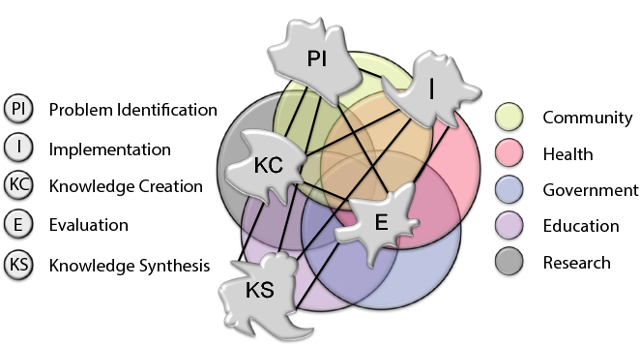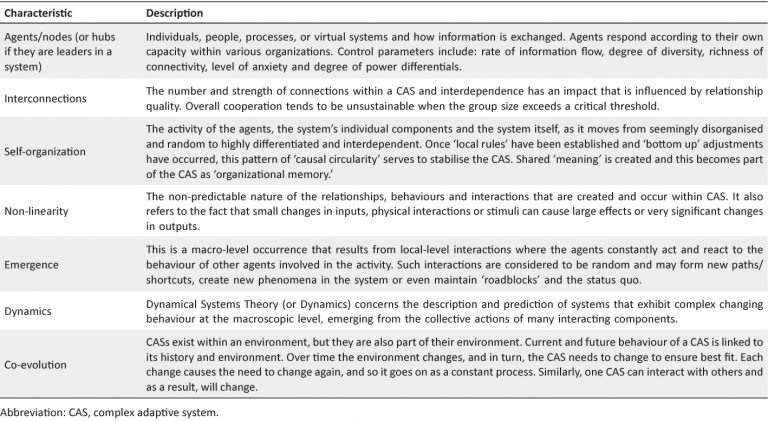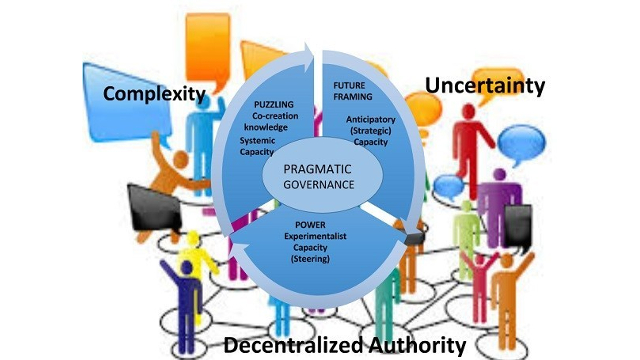
The Knowledge Translation Complexity Network (KTCN) model
Multiple models for the translation of evidence into healthcare policy and practice have been articulated. However, most are linear or cyclical, and very few come close to reflecting the dense and intricate relationships, systems and politics of organizations, or the processes required to enact sustainable improvements.
A recent paper1 illustrates how using complexity and network concepts can better inform knowledge translation. The ideas presented in the paper have been developed and refined by a cross-faculty interdisciplinary team in the Faculty of Health and Medical Sciences at the University of Adelaide, Australia. They argue that changing the way we think and talk about knowledge translation could enhance the creation and movement of knowledge throughout systems that need to develop and utilise that knowledge.
As shown in the diagram above, the paper proposes that knowledge translation is a complex network composed of five interdependent sub-networks, or clusters, of key processes (problem identification [PI], knowledge creation [KC], knowledge synthesis [KS], implementation [I], and evaluation [E]) that interact dynamically in different ways at different times across one or more sectors (for example community, health, government, education, research).
This is called the Knowledge Translation Complexity Network (KTCN), defined as a network that optimises the effective, appropriate and timely creation and movement of knowledge to those who need it in order to improve what they do.
The emerging KTCN model emphasises the central importance of individual actors within networks and who interact with others, thus forming clusters of activity. The paper argues that this is more likely to be achieved when knowledge transfer acknowledges a network of Complex Adaptive Systems.
Complex Adaptive Systems encompass ideas, concepts and tools that can be applied across multiple disciplines. They demonstrate the property of emergence; where macro-level properties arise from the interactions of lower level activities. They are robust, and within them, cumulative small occurrences have the ability to suddenly pass a critical threshold and produce large events.
How knowledge is created and mobilised within social Complex Adaptive Systems is determined by the relationships and shared understandings of what the benefits and incentives are for the movement of that knowledge. Understanding of such benefits may be explicit (as in the form of a set of objectives, mission statement or goals) but more often they are implicit, reflecting the common consciousness or prevailing motives, values and relationships of a group of colleagues, a team or a network who work together to create a common goal.
As shown in the KTCN model diagram above, the boundaries around clusters are dynamic: they can adapt and adopt according to the activities within and between the clusters. The KTCN is not simply defined by the sum of its parts . Relationship between these parts is of paramount importance. The main qualities of the KTCN is that it is a Complex Adaptive System comprised of its agents and characterised by interactions, self-organization, non-linearity, dynamics, emergence and co-evolution as defined in Figure 1.

In a follow-on paper2, the team has responded to a range of academic commentary on the original paper.
The next task will be to work collaboratively with stakeholders to generate the guiding principles or simple rules that normally reflect Complex Adaptive Systems. Such guiding principles will enable more widespread uptake and use of these ideas and facilitate others in applying the KTCN model.
Article source: The papers Using Complexity and Network Concepts to Inform Healthcare Knowledge Translation and The Knowledge Translation Complexity Network (KTCN) Model: The Whole Is Greater Than the Sum of the Parts – A Response to Recent Commentaries are licenced under CC BY 4.0.
Header image: Current Knowledge Translation Complexity Network (KTCN) model (source: Kitson et al. 2018).
References:
- Kitson, A., Brook, A., Harvey, G., Jordan, Z., Marshall, R., O’Shea, R., & Wilson, D. (2018). Using complexity and network concepts to inform healthcare knowledge translation. International journal of health policy and management, 7(3), 231. ↩
- Kitson, A., O’Shea, R., Brook, A., Harvey, G., Jordan, Z., Marshall, R., & Wilson, D. (2018). The Knowledge Translation Complexity Network (KTCN) model: the whole is greater than the sum of the parts-A response to recent commentaries. International journal of health policy and management, 7(8), 768. ↩
Also published on Medium.





